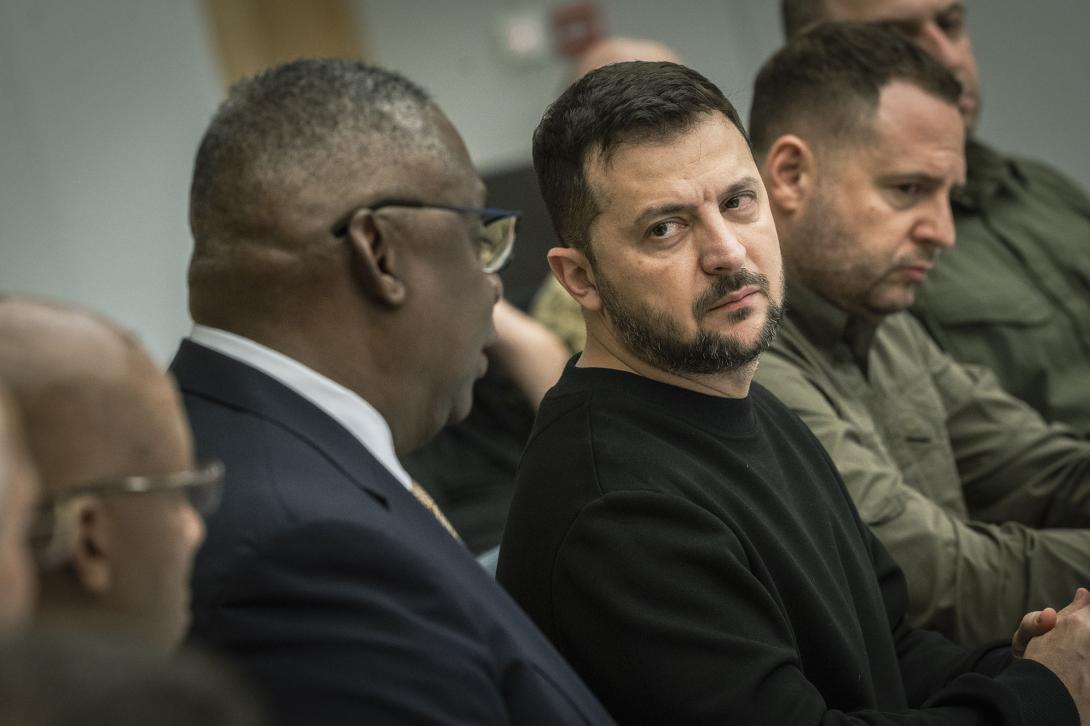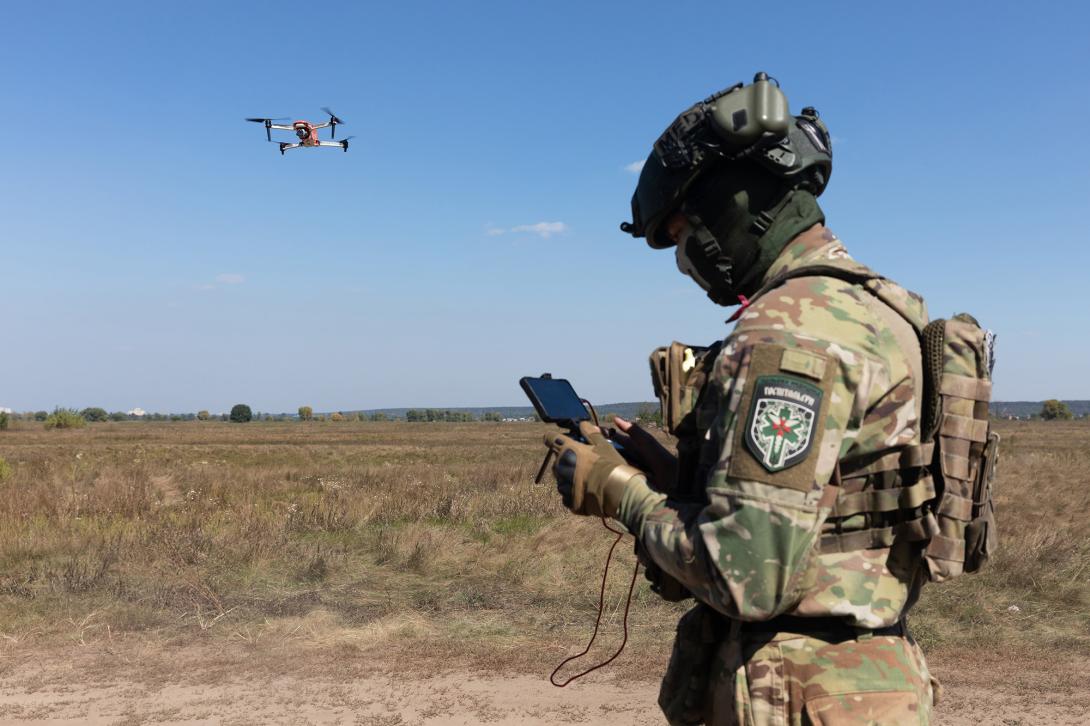The Rise of the Cyber-Empowered
Smaller NATO countries face hard constraints, but consistent and strategic investments in cyber allow them to deliver punches well above their weight.
Ukraine receives assistance for cyber warfare, as part of the support it receives from democracies around the world.
The Ukraine Defense Contact Group is a forum that brings together dozens of countries to discuss military aid to the embattled nation. It’s also called the Ramstein Group, after the U.S. base in Germany where the first meeting was held.
The information technology (IT) coalition is a subgroup that focuses on various aspects of tech, including cyber warfare.
“We are motivating other nations to join; then we get the requirements for support from Ukraine. We share with the other nations and coordinate on who can contribute what,” said Ben Fetler, head of cyber for the Luxembourg Directorate of Defence, the agency that implements the defense policy of the European nation.
The IT coalition is co-headed by Luxembourg and Estonia, two countries with advanced cyber capabilities.
“What we are doing is that we are figuring out ways to help Ukraine now, while they are fighting, to cater to the most urgent capability requirements they have,” said Heli Tiirmaa-Klaar, chair of the Ukraine IT Coalition Steering Group.
Both Fetler and Tiirma-Klaar represent their respective countries at the head of the IT coalition.
The Ramstein Group has other subgroups covering topics from artillery to demining. High-level ministers gather almost every month in Europe or via videoconference, and U.S. Secretary of Defense Lloyd Austin participates.
The United States credited the group with generating over $88 billion from 15 U.S. allies to bolster Kyiv’s defenses. Discussions within this framework have secured the agreements necessary to send advanced tanks and combat aircraft from Western European powers, among other capabilities.

The IT group is not centered around specific tools; it tries to enable Ukrainian warfighters to advance their own needs. It supplies “tactical communications, hardware and software-type of support for their own technological innovation,” Tiirmaa-Klaar told SIGNAL Media in an interview.
Also, “there is a huge technological back office that they have built,” Tiirmaa-Klaar added.
And the group is not only working in the present but is “also looking into the future capability requirements that Ukraine will have,” Tiirmaa-Klaar said.
Estonia’s cyber capabilities have matured after years of relentless attacks from Russia-sponsored actors. Luxembourg’s services-oriented economy and high diplomatic profile propelled it into action.
“We really started in 2019, really investing and prioritizing cyber,” Fetler said.
“The first thing that we did was the definition of a cyber defense strategy,” Fetler added. The 2021 edition of this document mandates the government to develop capabilities and a workforce suitable for NATO and EU contribution.
Infrastructure is where the country stands out.
The Luxembourg Cyber Defence Cloud (LCDC) is a project with two goals: first, it aims to supply the country and its closest allies with advanced and secure cloud infrastructure—this includes the NATO Support and Procurement Agency, allowing it to manage contractors that use this type of services; second, it hosts a training environment for cyber warfare operators.
“The LCDC will play a key role in the implementation of Luxembourg’s future cyber projects, contributing to our strategic goal of building one of the most cyber-secure defenses,” said François Bausch, deputy prime minister and minister of defense of Luxembourg, during the launching ceremony.
Both services are offered to defense agencies in the region. The cloud service is hosted on NATO ground, beyond the physical reach of the country’s government. The thinking behind this is enabling joint operations and maneuvers, according to Fetler.
The cyber range serves as a technology-isolated training space for honing skills as well as military cooperation.
This environment allows those working on cyber to “execute cyber attacks on the simulated infrastructure and train your people on how they will react to those attacks,” Fetler said.
This space isn’t only for defense training but also allows work on mindsets.
“If you want to protect against attacks, you need to also learn how an attacker thinks,” Fetler explained.
Given the high degree of infrastructure integration across the European continent, as well as other geographical and political factors, Fetler stressed the need to train and defend as a joint continental force.
“Every nation depends also on the cybersecurity strengths of other nations,” Fetler said.
Under the current cyber scenario, the country is trying to set a standard, and training grounds like these are not yet open to other countries.
“Most nations keep it for themselves and do not really share those capabilities,” Fetler said.
Beyond providing infrastructure for red hat teams, the country deploys resources that, in turn, provide fresh attack surfaces that need defense.
Fetler explained that the country is deploying space and reconnaissance assets, including novel unmanned capabilities.
And all these efforts, including the IT coalition, are aimed at leveraging real-world experience.
“It’s the education. It’s not only about providing support for Ukraine but vice versa; they’re also providing us with what they see,” Fetler explained.
Warfare in Eastern Europe does not seem to be in the present but unfolds in a lateral past that jumps into the future. And this is one of the contours that makes IT a crucial factor.
“Now, on the ground in Ukraine, it is interesting warfare, where you have this kind of trench warfare, together with a very high-tech warfare happening at the same time, so this is what we probably have not seen so far,” Tiirmaa-Klaar said.
The whole initiative has looked toward industry for resources, facilitating processes and funding. And the IT coalition shares the same interests. Thus, there is a role reserved for industry in the forum, and Fetler was emphatic about it. “We still want to motivate industry to provide in-kind contributions,” as has been the case in the initial stages of the conflict, when technology giants took an active role in the defense of Ukraine.
SIGNAL Media repeatedly attempted to contact the office of the Ukrainian Ministry of Defense, which manages the relationship with the Ukraine Contact Group. Other agencies in that government declined to comment.







Comments